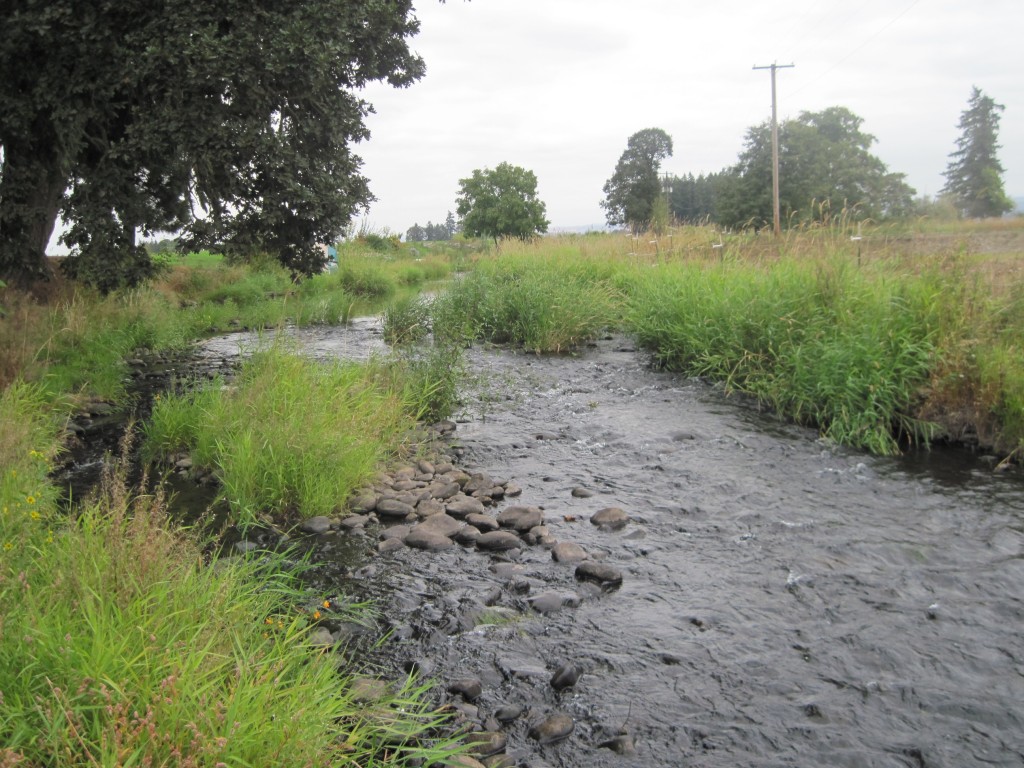
Dieckman Slough is a side channel of the Lower North Santiam River, just downstream of the City of Stayton, in Marion County, flowing through floodplain forests and commercial agricultural fields near Stayton-Jefferson Rd.
This project builds on significant existing restoration in the area, including NRCS Wetlands Reserve Program easements on a total of 331 acres, and the Hatch side-channel fish passage, instream, and floodplain restoration (all just downstream), as well as the adjacent, recently purchased Chahalpam Wildlife area, a 338 acre conservation easement held by the Grand Ronde Tribe.
- 49,187 native trees & shrubs planted - Winter 2016
- 19,325 native trees & shrubs interplanted - Winter 2017
- 2,050 native trees & shrubs interplanted - Winter 2018
The site experienced beaver activity in both 2017 and 2018. As a result the NSWC installed caged willows and several beaver feeding stations close to the water to help keep the beaver away from the young plantings.
The NSWC will continue to assist the landowner with spring and fall plant establishment activities until the plantings are “free-to-grow.”
In its lower section, Dieckman Slough is lacking instream habitat complexity and areas of floodplain forests have been converted for commercial agriculture. Many resident and migratory fish species (including Threatened Upper Willamette River spring Chinook, winter steelhead and Pacific lamprey) utitlize Dieckman Slough for spawning and rearing. Good quality off-channel habitat is a high priority restoration need in the North Santiam River, as expressed in the draft Willamette/Lower Columbia ESA Salmon and Steelhead Recovery Plan and other planning documents. OWEB grant funds and Farm Service Agency Conservation Reserve Enhancement funds were used to restore 24 acres of riparian/floodplain habitat.
